In various articles we have already shown that the overseas trade was becoming more and more important for Rome. Thus, the number of vessels sailing daily over the oceans from and towards Rome was increasing too. Also the number of owners of those vessels (the navicularii) expanded steadily, and somewhere in the first century AD, when exactly is not known, these skippers united themselves in professional associations, collegia. This was of course not only the case for navicularii, but also for many other businesses. The phenomenon of collegia occurred in the entire Roman Empire, in the towns and cities in Italy, North Africa, Spain and France. But what was a collegium, what was the purpose, who were the members and how was the organization structured?1
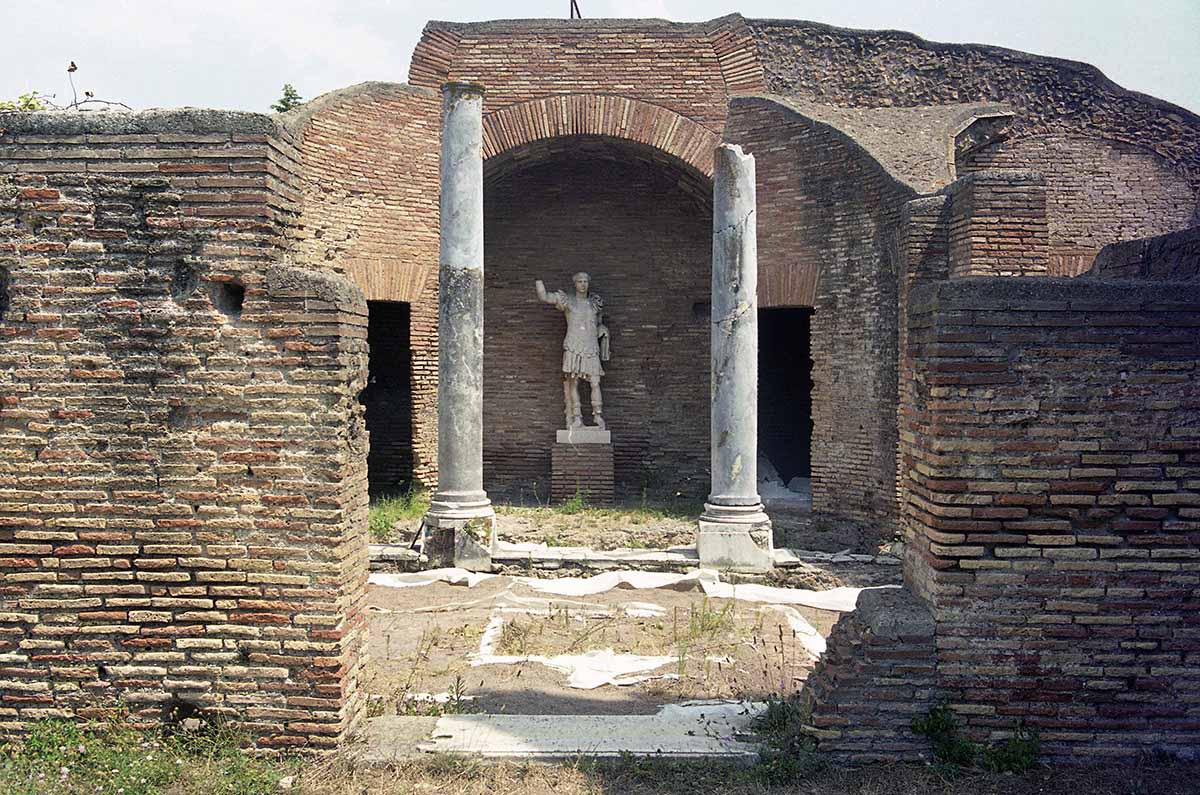
The guilds (collegia)
In his extensive standard work Roman Ostia, the British historian Russell Meiggs2 described a collegium as an organisation in which members who shared a common interest joined together for mutual benefit. Historians have distinguished three types of guilds:
- The collegia of members who had a common profession;
- The collegia of members who came together for a special cult or a specific god;
- The collegia as social associations, where only common events were celebrated, like members’ birthdates and special holidays, with of course the associated banquets.
Originally the emergence of collegia was a citizens initiative, tolerated by the State, providing that the rules and regulations, the lex collegii, were in line with the official state laws and regulations.
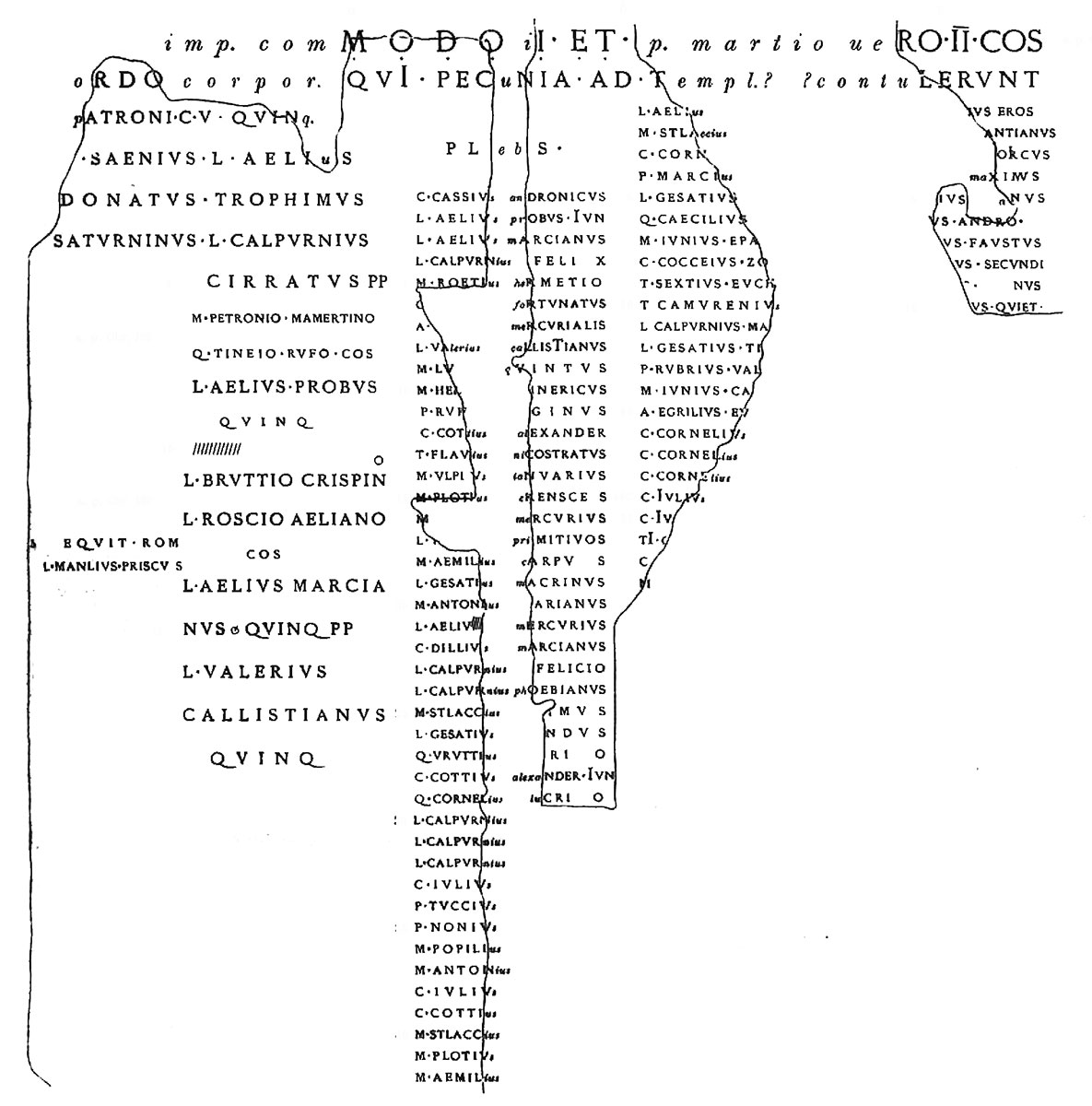
Apart from that, the government was definitely monitoring the collegia. A story from 186 BC tells us that all the Dionysian associations in Rome and Italy were banned, because this cult was seen as a threat to morality and order. About the history of the early days of the guilds little is known. We hear something about them in the first century BC, because some guilds formed a political power block and were exploited by malicious people to manipulate and disrupt elections. In 64 BC all collegia were prohibited. A ban that was repealed already in 58 BC. However, from that point on the State control remained of great importance, in particular for those associations in which the State had a special interest, as for example in everything involved with the food supply (navicularii, mensores frumentarii, pistores4, etc.) or with the associations who were in charge of extinguishing fires5. Each collegium had to be approved by the Senate or by the emperor himself. The associations and their members had to ensure all official expenditure and their children were in late antiquity even required to continue investing the fortune of their deceased father or mother in the same professional guild.
The organisation
The guilds were not trade unions and did not represent the interest of laborers against their employers. The employers formed the backbone of the organization.
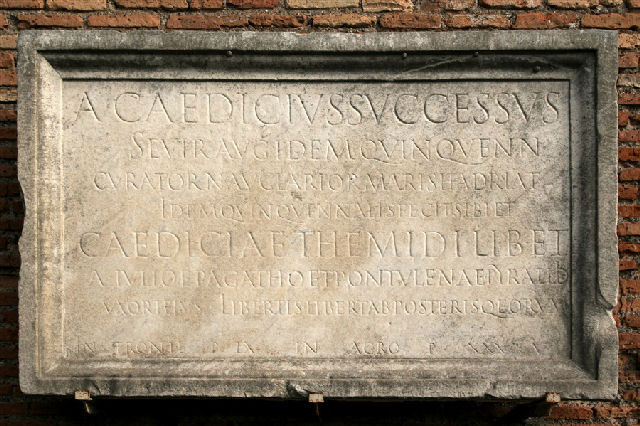
(president) of the guild of skippers sailing the Adriatic Sea6
For example, the lenuncularii were not the oarmen or the crew, but the owners of certain ships. The members consisted of ordinary members (plebs or populus), managers and patrons. Everyone could join the organization, including slaves and freedmen.
The board members were chosen from the members. The general name for the main board position was quinquennalis, who was, as the name implies, elected for five years. The shipbuilders had three of them. Often there were also two quaestores or curatores (treasurers), who were responsible for incoming and outgoing funds. These funds came from registration fees, donations and wills. The board could also consist of magistri and ministri.
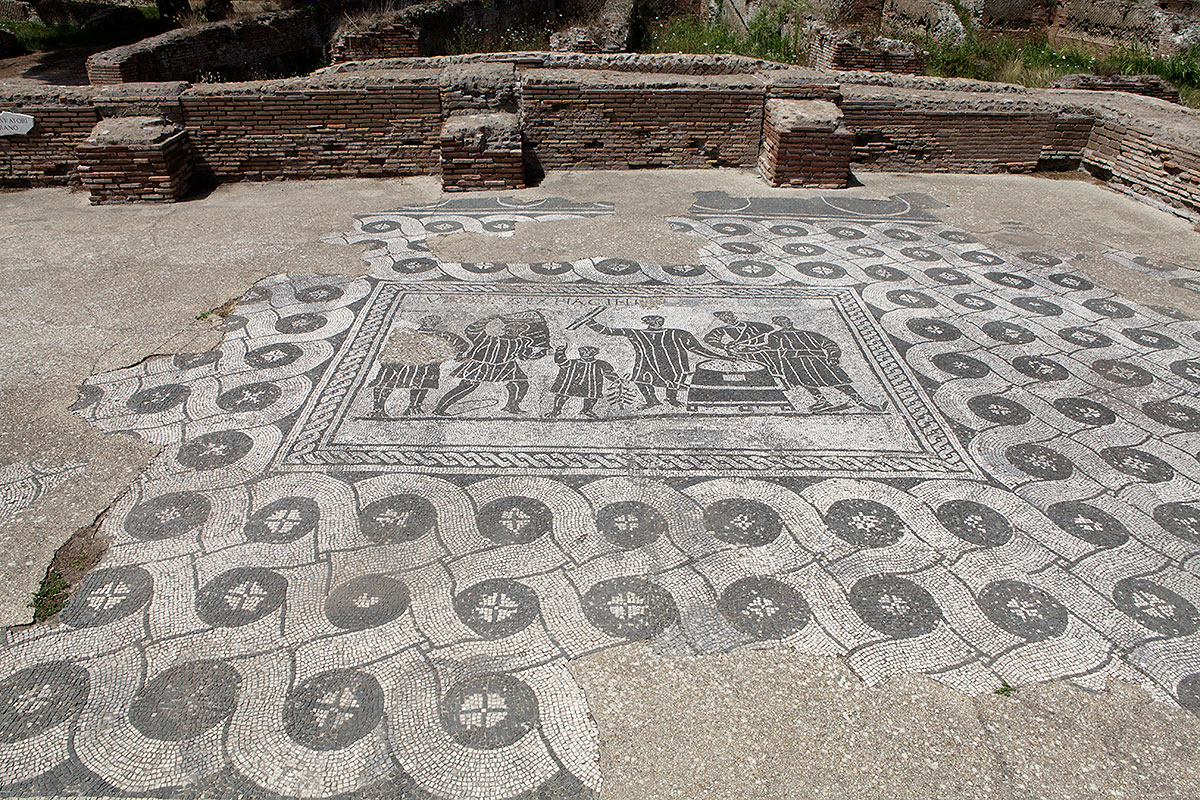
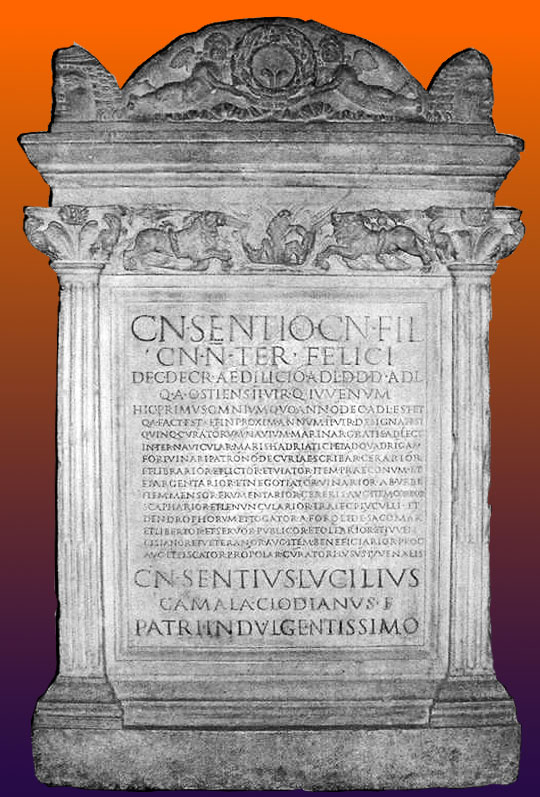
With good leadership they could be honoured with an inscription or statue that the honorands, by the way, often financed themselves. If they were no longer a board member after five years or more, the title could continue to exist as quinquennalis perpetuus or honoratus (forever) with the same benefits they had obtained during their duties. To get even better appearance the collegium could give membership to someone with another profession, but with prestige and money, such as a Roman senator. He then became patronus. C. Veturius Amandus, a Roman nobleman, described as patronus et defensor V corporum lenunculariorum Ostiensium, is commemorated by the lenuncularii: ob insignem eius in defendendis se et tuendis eximiam diligentiam7. Probably he had defended the business interests of the lenuncularii. Also respected, wealthy women could become patronus. Several members of guilds were also patronus of another guild, because they had an interest in that guild as well. Cn. Sentius Felix, who quickly rose to the highest positions in the city council of Ostia, was a member of the guild of skippers who traded in the Adriatic Sea, and in addition patronus of various other guilds, such as the bankers, fishermen, wine-sellers and many other professions.
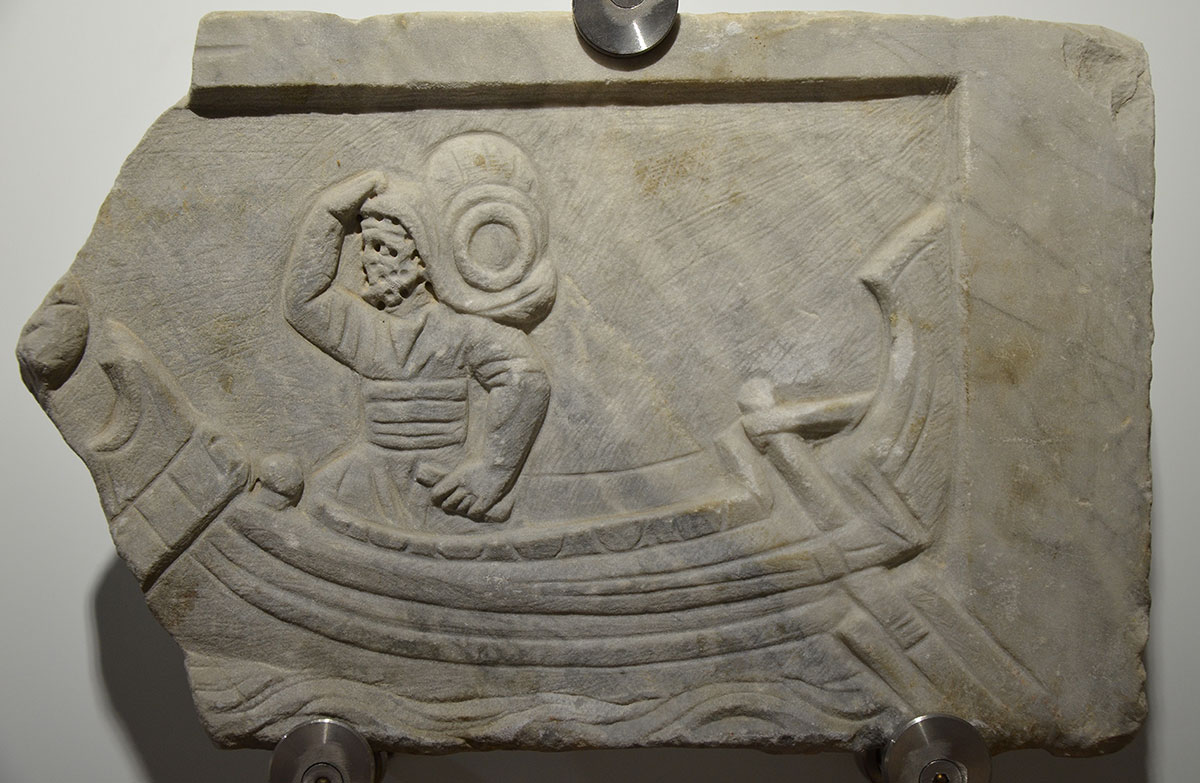
The scholae (association buildings)
Unlike Rome there were in Ostia, the port city of Rome, no political dangers or limitations for the collegia. Almost everything was organized in guilds. So besides the guild of the navicularii (owners of sea-going vessels) there were also guilds for the skippers of rowing boats that served in the harbour, the lenuncularii. These were divided into smaller guilds:
- The lenuncularii tabularii auxiliarii – guided the marine vessels to their mooringplace;
- The lenuncularii pleromarii auxiliarii – transported the cargo of a ship ashore if the ships could not moor;
- The lenuncularii traiectus luculli – the ferrymen.
There were a lot of other professions involved with the shipping and all of them had their own guild. For building the ships you had the fabri navales (shipbuilders), the stuppatores (the caulkers) and the restiones (the ropemakers). Around the docks and warehouses: the mensores frumentarii (grain measurers), the saccarii (dock-hands carrying grain bags), the phalangarii (dock-hands carrying amphorae), the custodiarii (warehouse guards), the gerulii (stevedores), the saburrarii (dock-hands carrying sand for ballast of a ship) and the urinatores (divers rescuing cargo lost overboard).
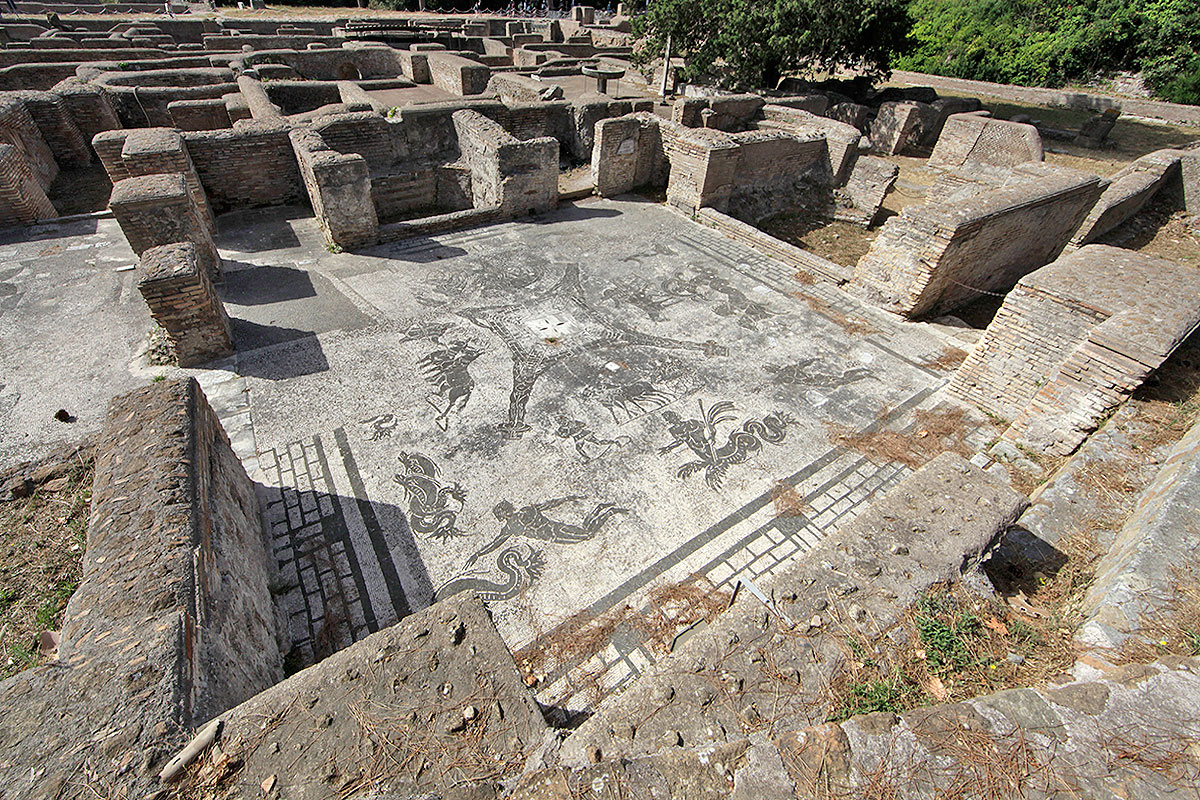
All these collegia had their own building to come together, a so-called schola. Such an association building was ideally built along the big main roads like, in Ostia, along the Decumanus Maximus, which made them more noticed. In addition, the price of land near these roads was likely to be higher than in other parts of the city. So one could show its wealth and thus more social prestige was obtained. Some collegia even had their own bath house, as for example the cisiarii (charioteers) in Ostia.
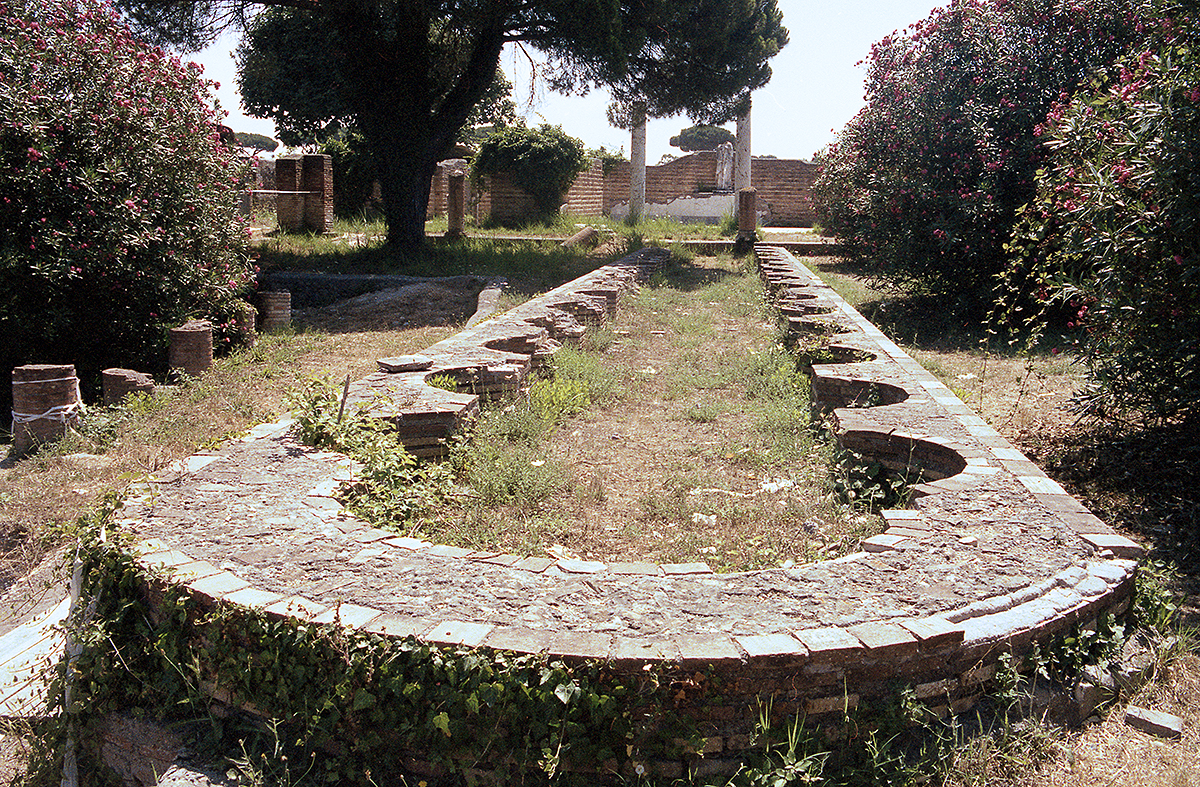
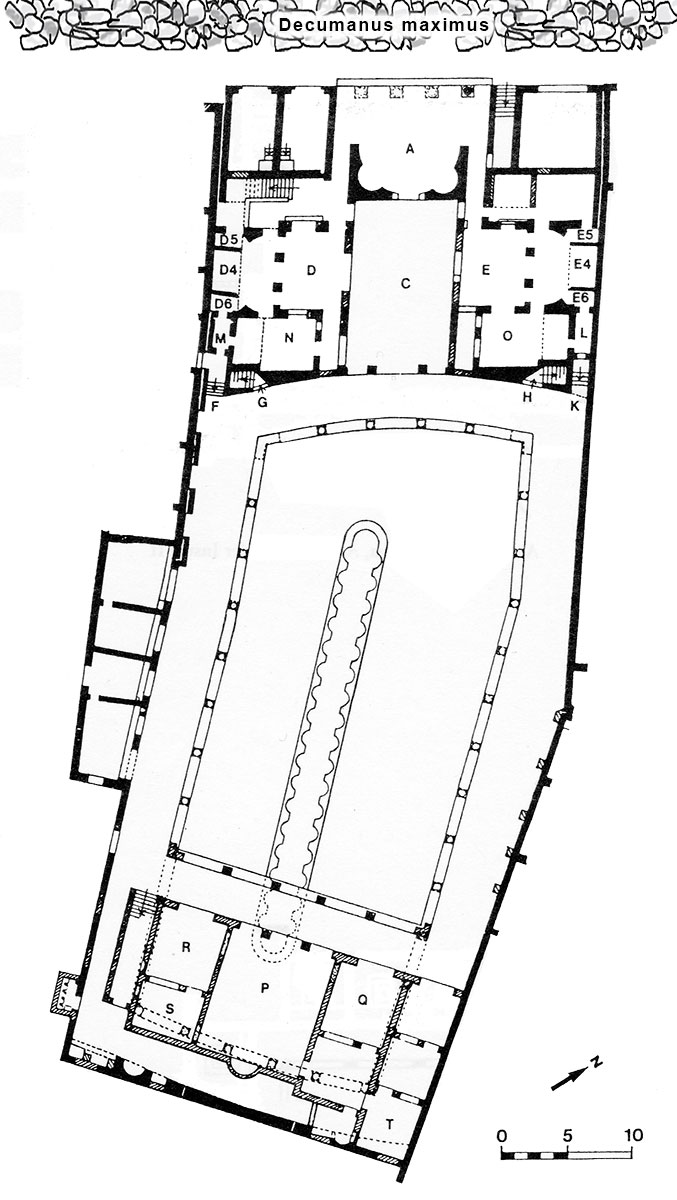
The schola of Trajan
One of the major collegia in Ostia had a building that is now known as 'Schola di Traiano'. The building is located along the southern side of the Decumanus. This building is generally seen as the schola of the navicularii (shipowners), due to an inscription found in the building:
M(arco) Pacceio L(uci) f(ilio),
q(uaestori) p̣ṛo pr(aetore),
naviculariei Ostienses
quod is primus simulacrum ---
ṣtatuarium pro ---
“To Pacceius, son of Lucius, quaestor with praetorian authority, the shipowners of Ostia, because he as the first a [sculptured picture ?]... .”
The inscription (no later than the time of Augustus) is older than the building itself. This also applies to the statue of Trajan found in room L (see Figure 1), a copy of which now stands in the front part (E4) and to which the building owes its current name. It is not strange that these objects are older than the building itself. Probably the guild was first housed at another location and, when it moved, the members took various objects with them. The brick building dates back to 145–155 AD and was built on two domus (expensive houses) that had to be broken down. It is an elongated building that is adapted to the adjoining buildings and therefore shows a kink halfway.
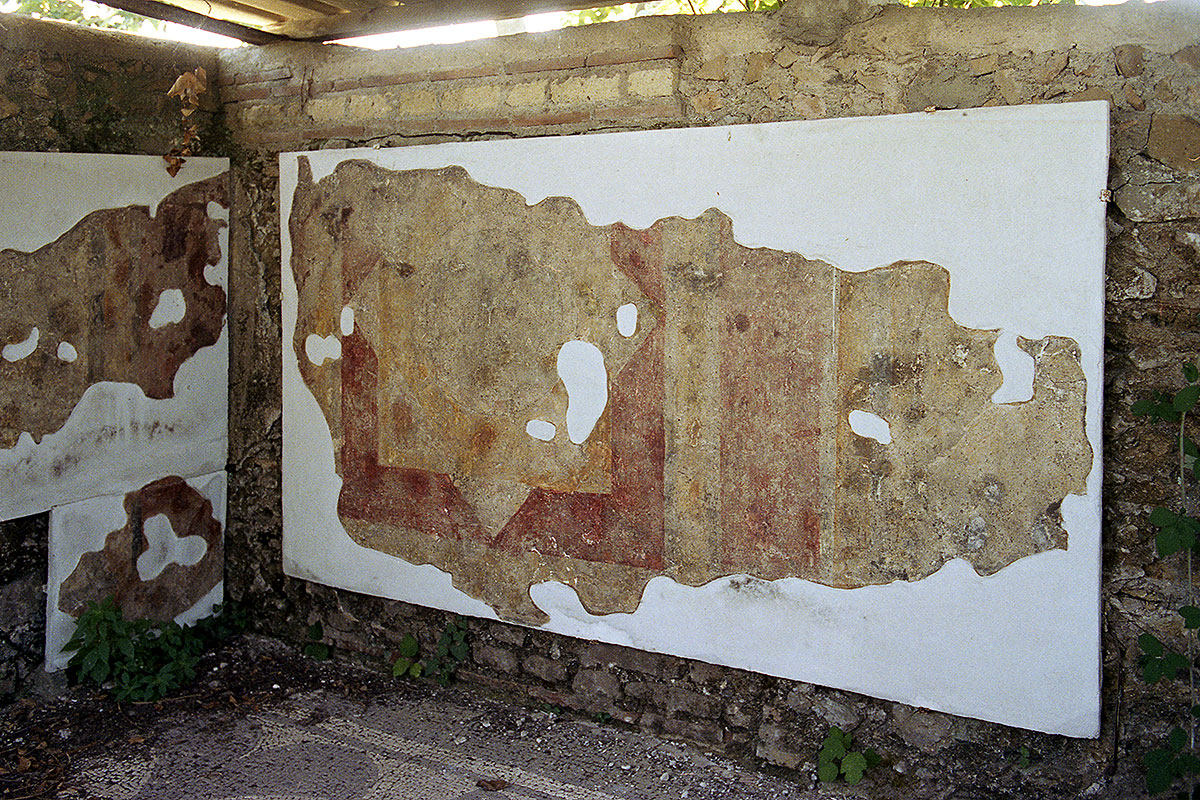
Originally it consisted of a building with a large garden peristyle. In later times in addition a rear part was built. The whole building was covered by a roof and had at least one upper floor. The garden was originally equipped with a porticus on all sides. In the middle ran a long, narrow water basin with niches. In a second building phase, during the first half of the fourth century11, the garden and the waterbasin were shortened to make room for the new rooms. This new part was built in opus vittatum (tuff alternating with layers of brick).
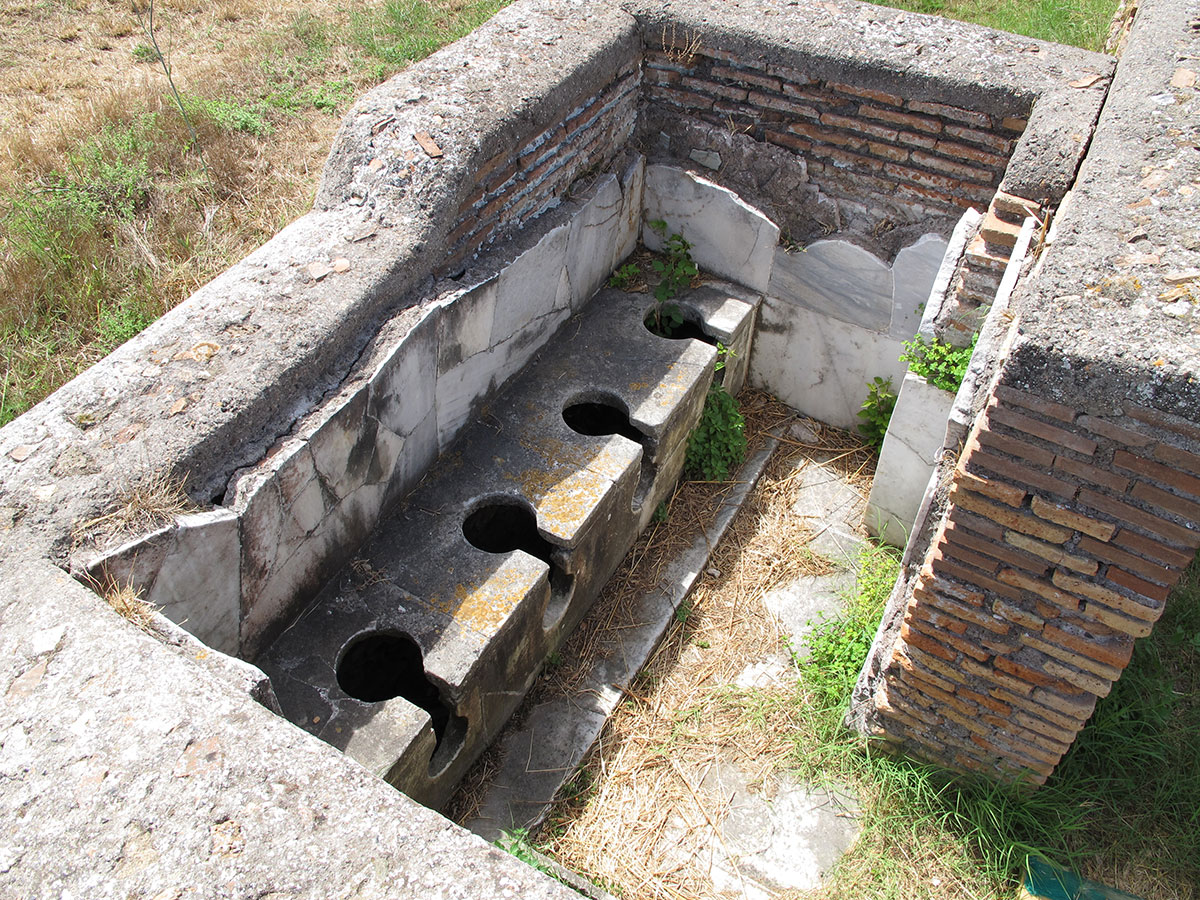
The central hall opens onto the garden and has two columns with a helical shaft. In the back wall is a semicircular niche. This room has a floor mosaic that clearly indicates a triclinium (a three-sided couch in a dining room). In the southwest of the enclosure is a small latrine with four seats.
Based on the size and representative appearance, the building is generally seen as a guild building. Also the open character of the entrance and the spaces in the building point in the same direction. It certainly cannot have been a private building. The different rooms and the size of the peristyle are clearly designed for large groups of people and banquets, in particular the construction of a new dining room in the third century. It is just strange that a cult space is missing and also the peristyle has not been found in similar scholae.
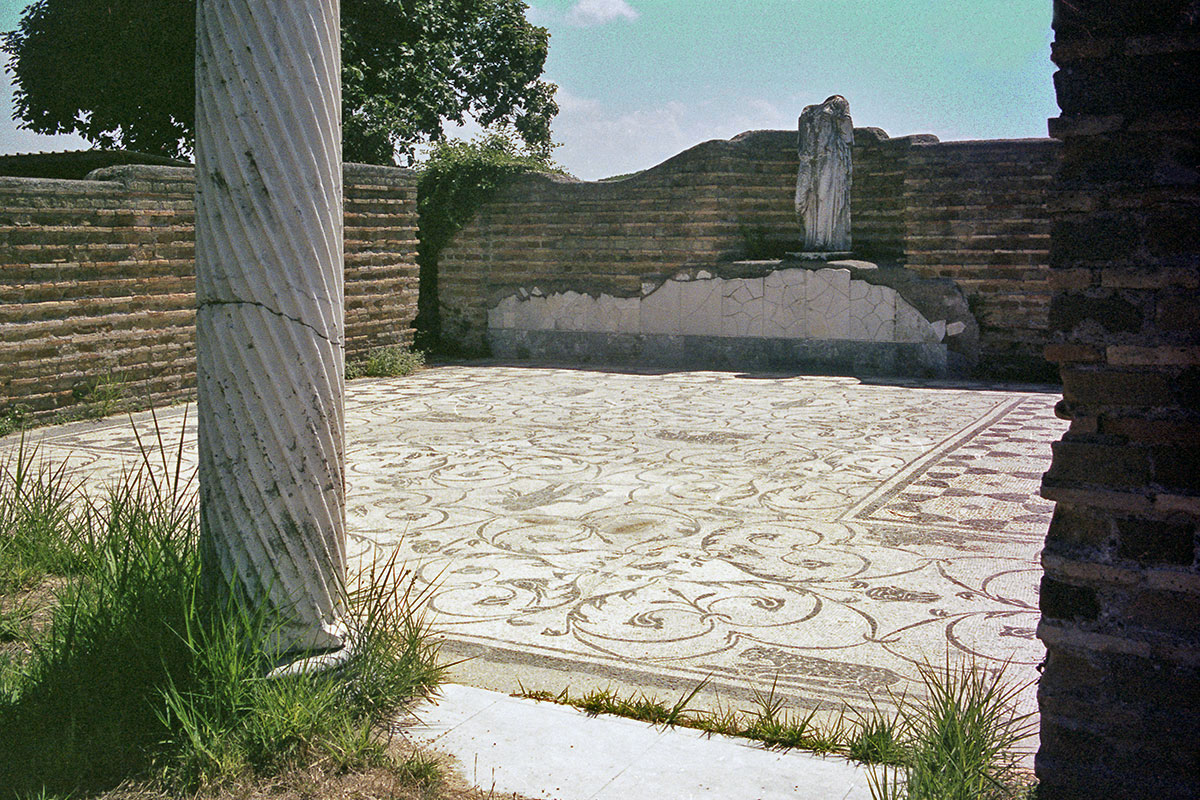
What also speaks for a schola is the statue of Trajan. Such a statue is not found in a private house. It might have been taken away by the guild from a previous location. Besides the statue, also an inscription found here with a list of names speaks for a schola. Because the Temple of the fabri navales (ship builders) is located opposite the Schola di Traiano, some archaeologists connect these two buildings with each other. Because of his construction of a new port (Portus), Trajan was, economically speaking, very important for the ship carpenters. In this case the schola would have belonged to the collegium of the fabri navales. In addition, concerning the missing cult place, it should be mentioned that a schola and temple also could be located further apart.
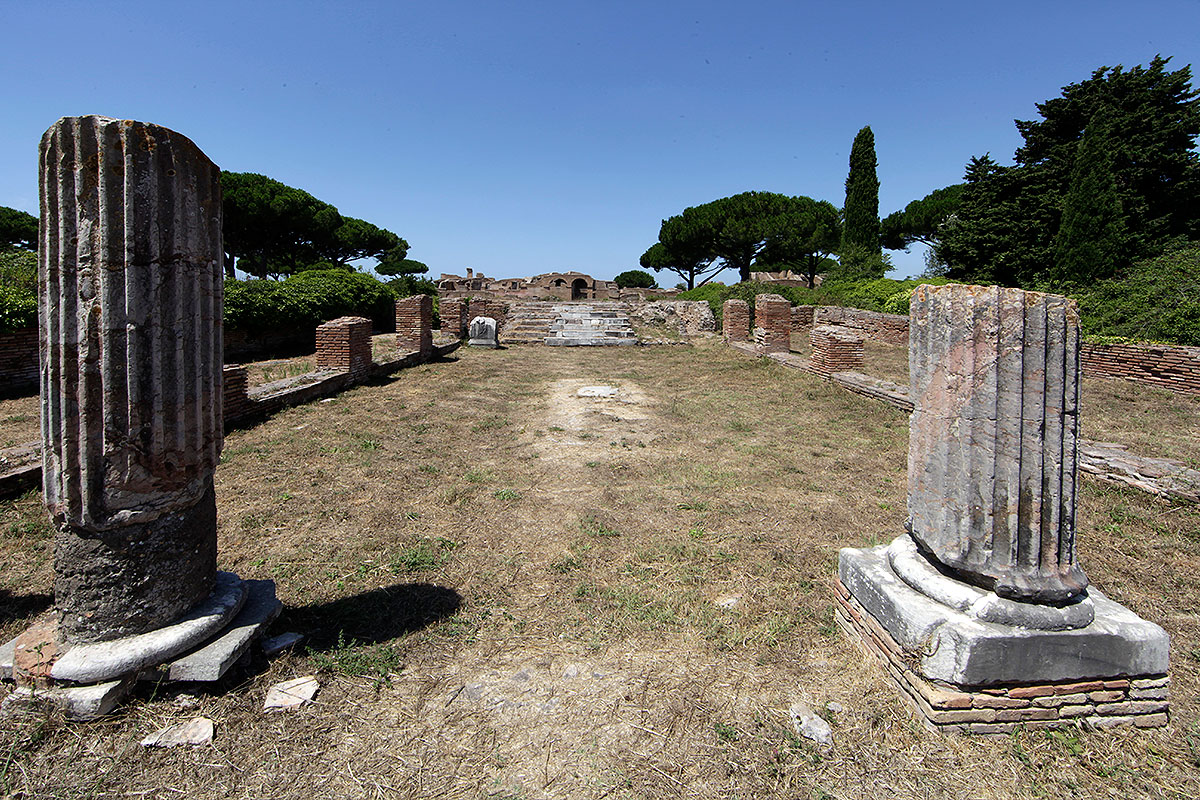
- Sources
- - Beate Bollmann: Römische Vereinshäuser – Untersuchungen zu den Scholae der römischen Berufs-, Kult- und Augustalen-Kollegien in Italien; Mainz 1998.
- - Russell Meiggs: Roman Ostia, Oxford 1973.
- Notes
- 1:About the various collegia not much is known. Many data come from fragments of inscriptions with membership lists that have been recovered.
- 2:Russel Meiggs (1902 – 1989) - Roman Ostia; Oxford 1973. A large part of his investigation of historical Ostia Meiggs did directly after the big excavation campaign conducted by Guido Calza in the years 1938 till 1942.
- 3:The lists are usually recovered in pieces of engraved marble. This list (CIL 14, 5356) mentions names from AD 179-187. It is not known from what guild. The left row shows patroni (patrons). Columns 2, 3 and 4 list the initials and nicknames of the members of the plebs, the regular members.
- 4:Navicularii = shipowners, mensores frumentarii = grain measurers, pistores = bakers, millers.
- 5:From the middle of the first century AD a special cohort of soldiers was responsible for fighting fires, the vigiles. These vigiles were not united in a collegium.
- 6:Photo www.ostia-antica.org; AE 1987, 191. Photograph: Bill Storage. Inscription: A(ulus) CAEDICIVS SVCCESSVS SEVIR AVG(ustalis) IDEM QVINQVENN(alis) CVRATOR NAV(i)CVLARIOR(um) MARIS HADRIAT(ici) IDEM QVINQVENNALIS FECIT SIBI ET CAEDICIAE THEMIDI LIB(ertae) ET A(ulo) IVLIO EPAGATHO ET PONTVLENAE PYRALLIDI VXORI EIVS LIBERTIS LIBERTAB(us) POSTERISQ(ue) EORVM IN FRONTE P(edes) IX IN AGRO P(edes) XXXV.
- 7:Meiggs. Roman Ostia, page 314.
- 8: CIL XIV, 409. Today in the Galleria degli Uffici in Florence.
- 9: Relief from Ostia with a dock-hand unloading food from a boat (second half of the third century AD), National Museum Rome.
- 10:Bollmann 1998, abb. 13.
- 11:Date: 330/340 AD. T.L. Heres 1982, 525.






 We are committed to providing versions of our articles and interviews in several languages, but our first language is English.
We are committed to providing versions of our articles and interviews in several languages, but our first language is English.